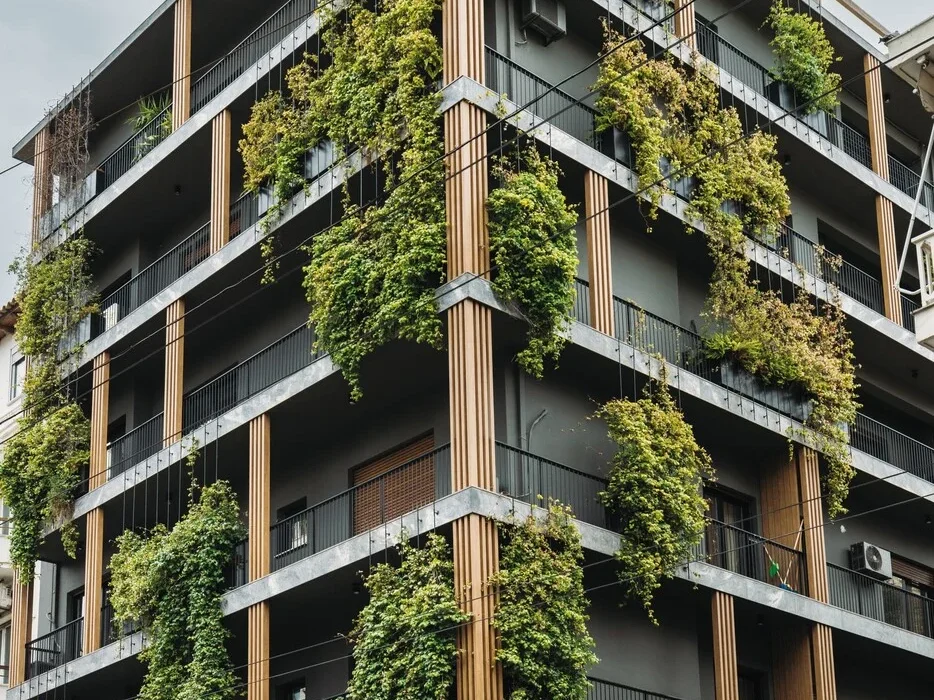Architect and engineer Aris Giannopoulos from the architectural firm WOA explains why green gardens, beyond their aesthetic appeal, are crucial for the city’s environmental temperature and air quality improvement.
Walking down Lekka Street, you can’t miss the plants adorning the façade of Gatsby, a hotel that has quickly become a landmark for the narrow street connecting Karagiorgi Servias (which becomes Perikleous further down) with Praxitelous Street. Vertical gardens are a rare sight in Athens, although there are some spots that resemble green oases if you look up, such as the hanging garden on Evripidou Street above Miran or the balconies on the apartment building on Eratosthenous Street, opposite the Basil & Elise Goulandris Foundation Museum.
“The Gatsby Athens Hotel is a model hotel focusing on a new form of architectural intervention aimed at biodiversity in an existing building,” says architect and engineer Aris Giannopoulos from the architectural firm WOA. He continues, “It simultaneously addresses the key questions of the relationship between people, the relationship of buildings with people, and the relationship of buildings with the city. The architectural vision was a building where the shell would be preserved intact, with the only substantial addition being the intense planting on various levels of the façade. And this is exactly WOA’s general proposal for existing buildings: they don’t need to be demolished or overly decorated to appear more modern or attractive, but should be treated as hosts for a new, greener installation that can enhance not only the building itself but also the neighborhood that surrounds it.
“Gradually, the planting will cover a large part of Gatsby’s façade, and through the selection of evergreen and deciduous green elements, the façades will be constantly changing, creating a particularly attractive urban landmark. The hotel’s implementation team has approached the reuse of this building with special respect and sensitivity towards its morphology, history, and location. Through the simplicity of the intervention, but with a very strong and clear concept, issues related to the design approach within the ever-evolving and changing urban landscape of Athens have been highlighted and resolved.”


In an interview, Giannopoulos elaborated on the concept of vertical gardens:
What do we mean when we talk about a “vertical garden”?
“Vertical gardening involves the vertical cultivation of plants, either on walls or specially designed structures that are attached to the vertical elements of buildings. This technique allows for creative and sustainable ways to integrate greenery into urban environments, creating a pleasant microclimate.”
How connected is it to architecture?
“The creation of a vertical garden can be a significant tool in the composition and enhancement of the designed building or installation. Beyond the substantial benefits to the broader urban and non-urban environment, it is a bold gesture that facilitates a dialogue between the architectural structure and the people who visit, use, or simply observe it.”
What does a vertical garden offer to a building and its surroundings?
“A vertical gardening installation can reduce CO2 levels, increase oxygen production, and improve air quality. Especially on building façades, it creates a pleasant, living ‘curtain-shield’ between the building and the environment, functioning as a sound absorber and thermal insulator, thus improving the overall energy efficiency of the building.”
This article was originally published in LIFO.















